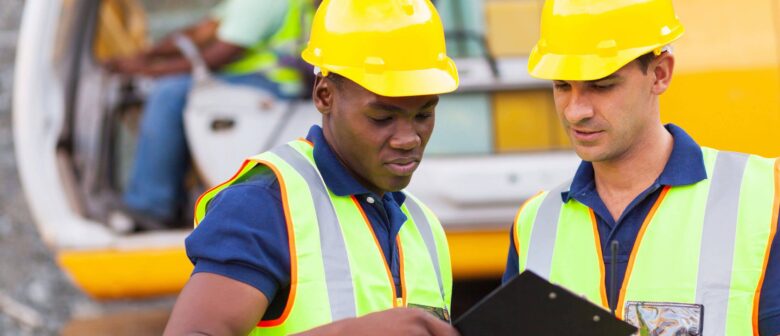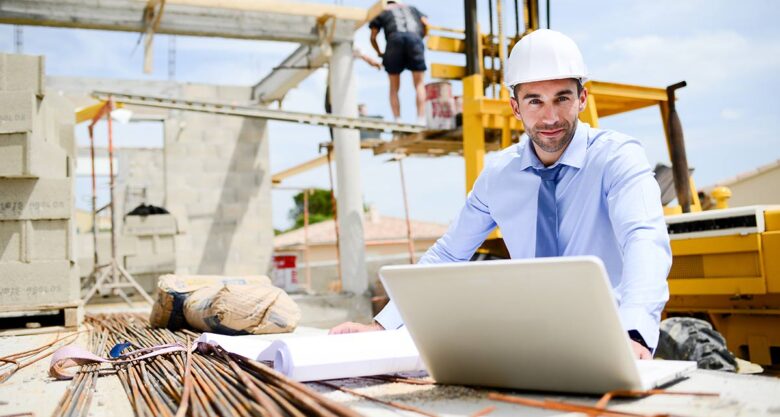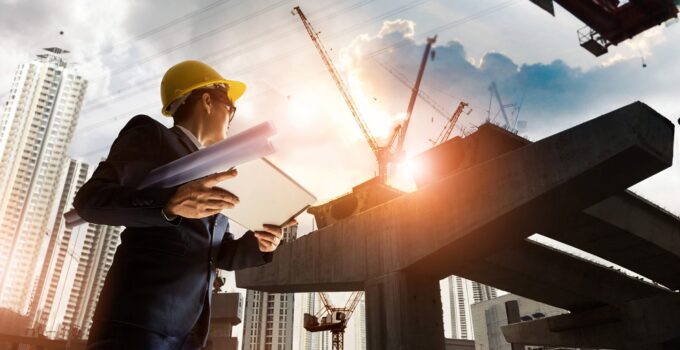There’s more to erecting a building than just sending the crew to perform manual labor. Someone has to pay their wages, provide them with equipment and material, and prepare the ground for labor. Also, someone must coordinate with architects, subcontractors, and inspectors to ensure everything runs as it should.
This is the job of construction managers.
They are in charge of allotting a budget, meeting safety standards, and meeting the expectations of owners/investors. They’re also a glue that keeps all these aspects, professionals, and teams together.
Still, what goes into construction management? What are the four key elements of a successful construction management process? Let’s check it out!
1. Communication

Source: highspeedtraining.co.uk
There’s no construction management without good communication. So many employees, specialists, and subcontractors must be coordinated through communication. They also need to interact with each other via established channels.
This communication doesn’t have to be direct and oral. Instead, it can come through reports. Reports, orders, and evaluations can be as effective as direct discourse. In fact, since it leaves a paper trail, some may argue that it’s more pragmatic for this line of work.
It’s also important to establish an official line of communication for all parties involved. You can provide your staff with official phones, preferably construction-site-proof models. This is an extra cost, but it helps with real-time coordination.
Direct communication with the main server or headquarters is possible through wearable technology. This type of sensor can track and analyze construction workers’ activity on the site. By reviewing this, you will be able to notice hazardous and inefficient patterns and give some helpful feedback.
Communication comes in many shapes and forms. Whichever you choose to use, you need to be direct and specific. Giving ambiguous orders and being frustrated when they’re not fulfilled is, frankly, a ridiculous notion.
2. Planning

Source: twproject.com
The hardest part of a construction project is that stages must be completed in that exact order. You need to start at the foundation, carry on with the frame, and finish with the roof (an oversimplified outline).
This means that if the concrete pouring machinery for the foundation is late, you have to postpone every step that comes after it. These delays keep adding up. This is why you must be careful with planning your headlines, communicate with everyone the importance of their role, and get confirmation that everything is on the way.
Deadlines are the biggest problem in the construction industry, so you need to learn how to leave more space to get some flexibility. You can’t move your deadlines too far, either. You see, Parkinson’s law of time management is also true in construction. Work expands to fill the available space until the deadline.
So, keep your deadlines shorter and incentivize your staff members to finish sooner. Provide rewards and try to be as supportive and motivating as you can.
Budget is an even bigger concern. You need to have enough money to see the project through. In fact, you wouldn’t be the first project to fail due to running out of funds. Some stages are more expective than you expect them to be.
3. Collaboration

Source: cicconstruction.com
We’ve already stressed the importance of communication, planning in stages, and developing plans for different teams. Some might argue that all of this falls under the concept of collaboration.
You will need to have a different team working on the same project toward the same goal. These teams will have different compositions, work with different tools, and be paid differently. It’s down to you to find a recipe that will allow you to balance these inequalities and find the most profitable system that works.
Good collaboration increases the accountability that workers and management members feel. The thing is that this is a responsible job where both safety and huge investments are on the line. Even with the most meticulous inspection, tracking, and noticing, everything is impossible. This is why you need people to be responsible and accountable.
Most importantly, collaboration boosts safety. This is also why risk management is so vital. If previous work is botched, the next team is at risk of ruining the project and getting injured in the process. This is not something that you can afford.
Good collaboration increases the accuracy of estimates and accuracy of execution. This means that the end result will always be superior.
4. The Right Technology

Source: stonemarkcm.com
Finally, in the 21st century, even the construction industry cannot function without technology.
According to specialists behind TeamIm, with so many reports, documents, and data, you’ll need an intelligent information management system. You need to find every document you’re looking for in a matter of seconds, and this is what an IIMS can help you achieve.
The next crucial piece of tech you need is the right 3D modeling tool. Seeing what the end project will look like before completion is incredibly important. It gives you a chance to notice mistakes ahead of time. Some of these platforms are so sophisticated that they can test how the projected building will behave under stress (intense wind, earthquake, shifting soil, etc.).
We’ve already mentioned means of communication and wearable technology, which is also a great way to improve your business practices. With all this data and BI software capable of analyzing it, you will get data-driven decisions you can act upon.
As far as the hardware goes, drones, 3D printing, and 3D laser scanners are revolutionizing the field like never before. While this equipment is expensive, renting is always an option.
Wrap Up
You may have noticed that we mentioned collaboration when we talked about planning. When we discussed communication, we mentioned wearable technology and communication tools. The truth is that while these elements of construction management are distinctive, they’re impossible to separate from the rest.
To get the most value out of your construction project, you must create a system that envelops them all. Make a timetable and plan a budget. Then, choose the right teams and establish proper communication channels from the very start. Finally, make sure that collaboration runs smoothly. Supervise and even intervene, when necessary, to ensure that is the case.




